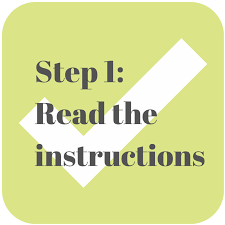IJWR – vol. 1 – 2018 – INSTRUCTIONS
I N S T R U C T I O N S
THE JOURNAL – basic elements and INSTRUCTIONS

ITALIAN JOURNAL on Wood PIGEONS’ Research
Giornale Italiano della Ricerca sul Colombaccio
ITALIAN language
( * ) I.J.Wp.R year 2018 , on-line ,Vol 1, 3 Feb.,2018
Pubblicato nell’anno corrente on-Line sul Website del
Club Italiano del Colombaccio
Il Giornale Italiano della Ricerca sul Colombaccio ( I.J.Wp.R. ) è una rivista internazionale che si occupa di problemi di ricerca, migrazione, censimento, biologia, ecologia, anatomia, fisiologia, conservazione delle specie di colombaccio ( Columba palumbus) . I principali campi di interesse sono documenti originali, articoli di revisione e discussioni su metodiche di Ricerca . Lettere all’Editor , Informazioni, relazioni sui progressi, commenti personali e brevi appunti o notizie sono anche accettate . I testi sono pubblicati sulla responsabilità dell’autore. Sono apprezzate idee innovative e persino controverse.
Il Journal esclusivamente on-line, è gratuito per i lettori registrati e aperto gratuitamente per gli Autori , anche non dipendenti da Istituzioni accademiche, secondo la politica della “scienza dei cittadini”.
La lingua ufficiale è l’inglese. I Lavori proposti in lingua italiana – francese – spagnola sono accettati se supportati da ampi Riassunti in inglese. Il Journal ha accesso ai Traduttori automatici in altre Lingue .
I Lavori proposti devono essere inviati via email all’editore ( leggi e accetta le istruzioni.
L’Editor Manager e i Consulenti Editors del Club Italiano del Colombaccio sono nominati dal Direttivo del Club . I Lavori presentati potrebbero essere presentati – non obbligatoriamente e sec. valutazione dell’Editor in chief – ai membri del Comitato Editoriale per l’accettazione .
L’editore Manager e i membri del Comitato Editoriale Internazionale su invito sono nominati dal Consiglio Direttivo del Club Italiano del Colombaccio
Preparazione del manoscritto
- Prima pagina
Dovrebbe contenere il titolo, il nome dell’autore (i) con il nome (i) completo (i), l’abstract, alcune parole chiave, l’affiliazione istituzionale dell’autore (i) e l’indirizzo (i) per la corrispondenza (con un’e-mail se del caso). L’abstract (fino a 200 parole) dovrebbe riassumere i metodi applicati e i risultati.
Vedi esempio :
Ihttp://www.borenv.net/BER/pdfs/ber22/ber22-097-114-Palm.pdf
l testo deve essere scritto in inglese corretto (non necessariamente redatto da scrittore di madre lingua) o / e in italiano o in Francese o Spagnolo
Il testo dovrebbe essere articolato come segue:
– abstract
-parole chiave
– Introduzione
– Materiali e metodi
– Risultati
– Discussione
– Conclusione
– Riassunto (facoltativo)
– Riferimenti Bibliografici – Riferimenti Web- (*)
– Email di un autore corrispondente responsabile
Il testo, le figure, le illustrazioni, la grafica, le mappe, le conclusioni, le opinioni e le discussioni sono pubblicati sotto la responsabilità firmata ( cartaceo PT) dell’autore,primo nome .
Modello di esempio come da
http://www.borenv.net/BER/pdfs/ber22/ber22-097-114-Palm.pdf
Bibliografia come linee guida che seguono da esempio
Hubálek Z. 2003. Migrazione primaverile degli uccelli in relazione all’oscillazione del Nord Atlantico. Folia Zoologica 52: 287-298.
Hubálek Z. & Čapek M. 2008. La distanza migratoria e gli effetti dell’Oscillazione del Nord Atlantico sull’arrivo primaverile degli uccelli nell’Europa centrale. Folia Zoologica 57: 212-220.
Huntley B., Green R.E., Collingham Y.C. & Willis S.G. 2007. Atlante climatico degli uccelli da riproduzione europei. Durham University, RSPB e Lynx Edicions, Barcellonia.
Huth R. 2010. Applicabilità sinottico-climatologica delle classi di circolazione dalla collezione COST733: primi risultati. Fisica e Chimica della Terra 35: 388-394.

….siete pronti ? potete spedire via Email in Attachment “Word” /pdf a ecavinaster@gmail.com ”
Gli Editors tratterranno gli articoli che gestiscono in modo confidenziale, anche attraverso contatti diretti con gli autori.
.
ENGLISH
Italian Journal of Wood pigeons’ Research (*)
(*)IJWR – 2018, on-line, Vol 1, 3 Feb., 2018
Published in the current year on-line connected with the Website of
Italian Club of the Colombaccio
The Italian Journal of Research on Colombaccio (IJWR) is an international journal dealing with problems of research, migration, census, biology, ecology, anatomy, physiology, conservation of woodpigeons species (Columba palumbus). The main fields of interest are original documents, review articles and discussions on research methods. Letters to the Editor, Information, progress reports, personal comments and short notes or news are also accepted. The texts are published on the responsibility of the author. Innovative and even controversial ideas are appreciated.
The Journal exclusively online, is free for registered readers and open for free to the authors, even if not dependent on academic institutions, according to the “citizens’ science” policy.
The official language is English. The papers proposed in Italian are accepted if supported by large summaries in English.
The Journal has been proposed ( work in progress ) for the Directory of Open Access Journals – https://doaj.org/
The proposed contributes must be sent by email to the publisher (read and accept the instructions) to
ecavinaster@gmail.com
The Editor – Manager and Editors Consultants of the Italian Club of Colombaccio are nominated by the Board of the Club. The submitted Works could be presented – not obligatorily and sec. Editors- evaluation – to other members of the Editorial Board for acceptance.
The editor / s in charge and the members of the International Editorial Committee ( by invitation ) are nominated by the Board of Directors of the Italian Club of Colombaccio

Preparation of the manuscript
- First page
It should contain the title, the name of the author (s) with the full name (s), the abstract, some keywords, the institutional affiliation of the author (s) and the address (s) for correspondence (with an e-mail if appropriate). The abstract (up to 200 words) should summarize the applied methods and results.
See example:
Ihttp: //www.borenv.net/BER/pdfs/ber22/ber22-097-114-Palm.pdf
The text must be written in correct English (not necessarily written by a native-language writer) or / and in Italian – Accepted also in French and Spanish languages ( long English Abstract is mandatory )
The text should be structured as follows:
– abstract
-keyword
– Introduction
– Materials and methods
– Results
– Discussion
– Conclusion
– Summary (optional)
– Bibliographical References – Web References – (*)
– Email of a corresponding responsible author ( mandatory )
The text, figures, illustrations, graphics, maps, conclusions, opinions and discussions are published under the signed responsibility (letter by MAIL- PT) of the author, first name.
Sample mode l like
http://www.borenv.net/BER/pdfs/ber22/ber22-097-114-Palm.pdf
Bibliography as guidelines that follow as an example
Hubálek Z. 2003. Spring migration of birds in relation to the North Atlantic oscillation. Zoological Folia 52: 287-298.
Hubálek Z. & Čapek M. 2008. The migratory distance and effects of the North Atlantic Oscillation on the spring arrival of birds in central Europe. Zoological Folia 57: 212-220.
Huntley B., Green R.E., Collingham Y.C. & Willis S.G. 2007. Climate Atlas of European breeding birds. Durham University, RSPB and Lynx Edicions, Barcellonia.
Huth R. 2010. Synoptic-climatological applicability of the circulation classes from the COST733 collection: first results. Physics and Chemistry of the Earth 35: 388-394.
” ….are you ready ? please email your text/paper in Word or pdf

to ecavinaster@gmail.com ”
The Editors will retain the articles that they manage in a confidential way, also through direct contact with the Authors .
Flexibility of acceptance is a policy of IJWR during first experimental year .
Writing an Abstract for an Article, Proposal or Report
What is an abstract?
An abstract is a condensed version of a longer piece of writing that highlights the major points covered,
concisely describes the content and scope of the writing, and reviews the writing’s contents in abbreviated
form. Abstracts are typically 100 to 250 words and follow set patterns.
Why is an abstract so important?
• Help readers decide if they should read an entire article
• Help readers and researchers remember key findings on a topic
• Help readers understand the text by outlining key points prior to reading the full document
• Index articles for quick recovery and cross-referencing
What are the key elements that should be included?
• Background: A simple opening sentence or two placing the work in context.
• Aims: One or two sentences giving the purpose of the work.
• Method(s): One or two sentences explaining what was (or will) be done.
• Results: One or two sentences indicating the main findings (or what you hope to accomplish with
the project).
• Conclusions: One sentence giving the most important consequence of the work – what do the
results mean? How will they be used?
Questions an abstract should answer:
• Why did you do this study or project? (Or why are you undertaking the project/study?)
• What did you do, and how? (What will you do? How?)
• What did you find? (What do you expect to find?)
• What do the findings mean?
Managers EDITORS : Enrico CAVINA “Colombaccio Scientifico CIC “ – Rinaldo BUCCHI – Sauro Giannerini – Denis Bianchi – Graziano Giovanetti Vasco Feligetti
Edited by CLUB ITALIANO del COLOMBACCIO
Our mission : < Freedom and Citizens’ Science “
Journal free of charges for Readers and Authors
